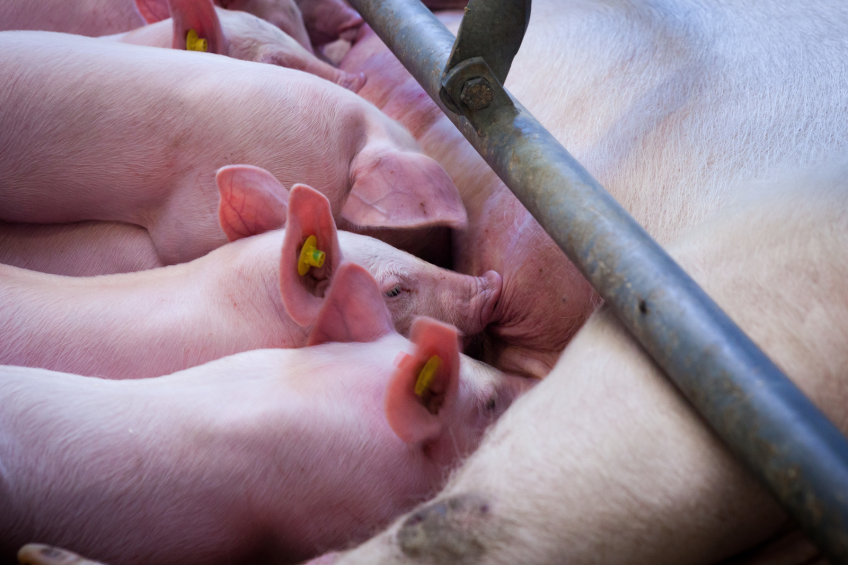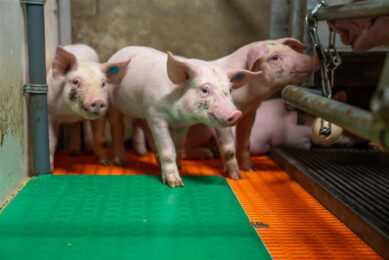Needs and challenges of pre- and post-weaning piglets

The most challenging time in the life of a piglet is just after birth and around weaning. Through focused management and the right nutritional strategies, pre- and post-weaning mortality can be reduced, and performance optimised.
In Denmark, creep feeding for many years has been considered ‘the evil stepchild’; something that was done, but at the same time the cost was kept at an absolute minimum. The philosophy was, that feeding the piglets pre-weaning did not affect mortality; the only purpose of creep feeding was to stimulate the digestive tract to produce digestion enzymes in order to prepare for the transition into feeding with no or low milk content at weaning. However, this perception has been changing over recent years, helped by the large litters of Danish sows, and increasing challenges to keep an acceptable pre-weaning mortality rate.
The piglet must survive the first hours
Birth weight is of significant importance for the survival of the piglets. Research shows that if birth weight is below 1 kg, mortality increases to 30-50%. With birth weight below 0.5 kg, mortality rate is as high as 70-100%. This can be partly explained by the fact that the time from birth to first colostrum intake increases and that the body temperature of the newborn pig decreases, if birth weight is below 1 kg. More well-known is the fact that a sufficient intake of colostrum is essential for the survival of a piglet. The literature describes 200-250 g of colostrum per piglet as a sufficient amount, as more does not increase survival.
Piglets are born with very low energy resources, which is why it is crucial that they do not get cold, and have an energy uptake as fast as possible. 24 hours after birth, piglets with no milk intake, but in a warm environment, still have 80% of the resources remaining, whereas piglets that are kept in a cold or wet environment only have 5% of the energy resources they were born with, left – hence a higher chance of dying due to cold/energy deficiency.
With even smaller piglets, it turns out that some piglets are not able to utilise the energy resources from birth, as this mechanism depends on the hormone IGF1. The role of this hormone in these piglets seems impaired, not necessarily due to a lack of hormone, but due to less sensitivity to the hormone. This causes the piglets to reach a state of energy deficiency very fast. Supplying PigletSaver, an oral paste administered to weak piglets as soon as possible after birth and again 12 hours later, increases the sensitivity to IGF1 instead of supplying more energy as most other products do. This enables the piglets to fully utilise the energy resources already in the body, and allows the piglet to achieve a sufficient colostrum intake.
The transition to feed
Once piglets have started suckling, they soon need to learn how to eat. They must be offered a feed that suits the development stage of the gastrointestinal tract, supplies nutritional composition, as well as being appealing, palatable and stimulates further feed intake.
The piglets’ ability to produce digestive enzymes in the first weeks of life are somewhat different from later on. During the first few weeks, the digestion is adapted to milk as the main source of nutrients. To supply a feed that can add to the nutrition of the pig and increase performance, therefore requires feed components and nutrient levels that are adapted to these limitations. Up until 6-8 weeks of age, the ability of the piglet to digest vegetable proteins is limited, while they can to some extent digest vegetable fats, certain types are better than others. Until the age of 8-10 weeks, the digestion of the piglet is highly adapted to lactose as an important source of energy.
Smell and taste
Pigs by nature are very dependent on their olfactory sense. To attract the interest of the piglets, the feed has to have an appealing smell and a sweet taste. Bitterness should be avoided and a sour taste has to be dealt with carefully to achieve the best feed intake. Sour tastes can be a particular challenge, as organic acids usually are added for conservation, feed stability and microbial control reasons, and the preferences of the piglet changes, depending on the level of the inclusion of the individual compound.
Adding organic and inorganic acids have the functional purpose of decreasing the pH of the stomach, as young pigs do not have a fully developed production of gastric juice yet. A lower gastric pH helps the pig build an antimicrobial barrier, preventing that bacteria from entering the intestine and causing intestinal problems. The composition of acids is important for bacterial control and influences which types of bacteria will be dominating in the intestinal tract.
The composition of the feed must take into consideration the nutritional needs of the young piglets. Lactose content is a very important component in piglet feed: sow milk consists of around 25% (DM) lactose, which is why a good creep feed should also contain a high level of lactose. Protein supply should predominantly be milk protein (see box), and under all circumstances from sources with the highest possible digestibility for small piglets. At the age of three weeks, the digestibility of milk protein is 92-96%, while fish- and potato protein digestibility is 84-89%, and soy protein even lower; as low as 70%. Fish and potato protein digestibility is at an optimum at around six weeks, and at this age soy protein digestibility reaches approximately 88%.
Antinutritional factors
The content of antinutritional factors (ANF) should also be minimised as much as possible. Good quality fish meal, bloodplasma and other components of animal origin do not contain ANF, and processed vegetable products like soy and potato protein concentrates have a strongly decreased content. Also digestibility of fats are of importance. Coconut oil has the best digestibility for piglets until the age of 3-4 weeks. Pig lard has the lowest of all fats for young pigs. On top of the choice of macro components and nutritional levels, usually a number of supporting additives come into question. Besides organic and inorganic acids, probiotics are widely used. Prebiotics are used increasingly as well as antioxidants and other plant extracts that claim to have a lot of advantages, from being antimicrobial to modification of the metabolism.
Feeding strategy for milk products
For optimal nutrition and growth in the farrowing unit, the piglets should be offered a milk product. This can be done by liquid milk products, in bowls or in continuous flowing cup systems. ViloFoss research has shown that even in products with a high content of lactobacillus, there is a significant growth of potentially pathogenic bacteria within a very short time after administering the milk in a bowl at farrowing room temperature. Dry alternatives such as the ViloFoss MilkCap offers a nutritional and hygienic way to supply high quality milk products to the piglets with minimum labour. As part of the MilkCap is heat treated wheat starch, it also offers a soft adaptation to start digesting vegetable products.
When the piglets reach six days of age, an actual creep feed should be offered. This can be done in either dry or liquid form for quicker introduction. Due to hygiene, the liquid creep feed should be in bowls and with the same focus on hygiene like with the milk products.











